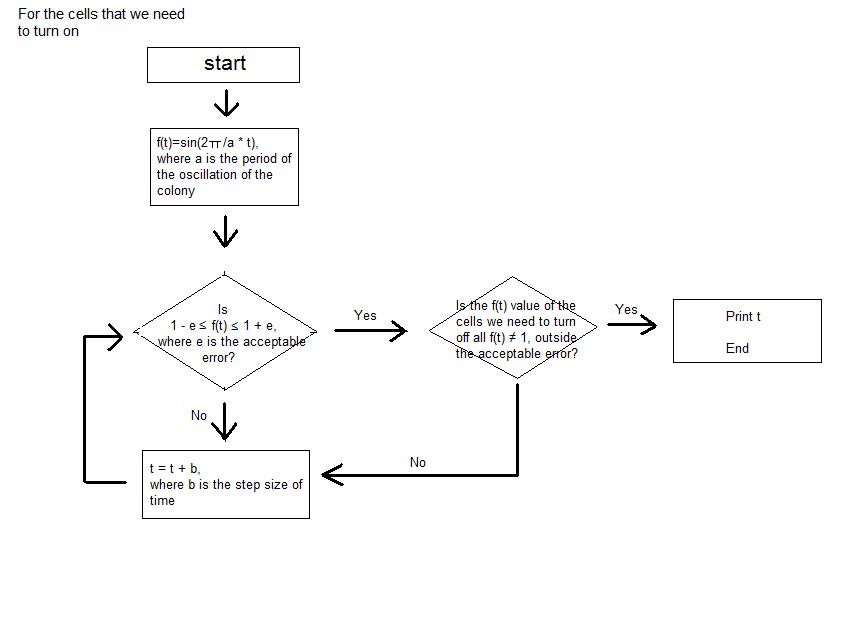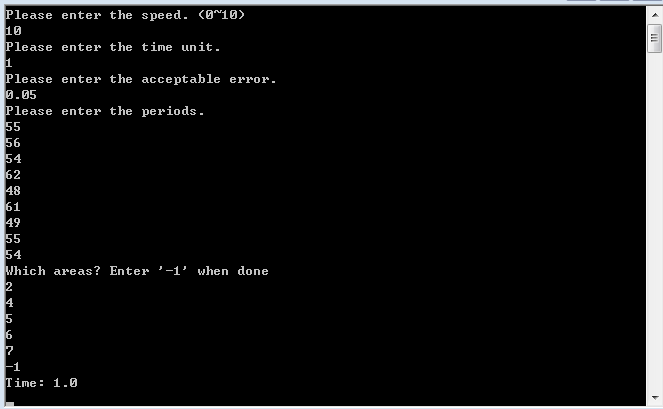Team:CSIA SouthKorea/simulation
From 2012hs.igem.org
(Difference between revisions)
| Line 11: | Line 11: | ||
: [[Team:CSIA_SouthKorea/Source | This]] is the instruction of how the values are put into the program. | : [[Team:CSIA_SouthKorea/Source | This]] is the instruction of how the values are put into the program. | ||
| - | : This is the example of the simulation that we did. | + | : This is the example of the simulation that we did, and here are examples of some values that we have put in. |
| + | : 'speed' indicates how fast the program is run until the final result is shown, and time unit corresponds to arbitrary time units(which we assumed 1 as one minute), the value of periods that we put in the window are based on the [[Team:CSIA_SouthKorea/variables | paper]]<sup>1</sup> that shows average period in GFP luminescence is about 55minutes. | ||
| + | |||
: [[File:blackwindow.jpg]] | : [[File:blackwindow.jpg]] | ||
Revision as of 03:04, 17 June 2012
- We simplified the oscillations of GFP expression in each E. coli colonies into sine function on time. Therefore, when the periods of the oscillation of the E. coli colonies are entered as input, in each cell of the 3*3 array, which represents the 9-well-plate, the sine function with each of the entered period is corresponded. We set -1 as the value of the sine function when the GFP expression is the lowest and 1 as the value of the sine function when the GFP expression is the highest. We assumed that the GFP expression of all the colonies started from the sine function value of 0.
- Then, when the step size of time, tolerance of error, the picture that we are trying to express with the night stand are entered as the input, the program calculates the sine function value of each cell at certain time and seeks for the point where only the colonies of certain cells have the sine function value close to 1 inside the tolerance of error that was entered as input. Until the point is reached, the program keeps on calculating the sine function value of each colony by increasing the elapsed time by the step size of time that was entered as input.
- The program continuously shows the process; we can actually see the numerical value of sine function of each cell at each moment. The program stops running at the time when the picture that we want to obtain (when the certain cells that make the picture have sine function values very close to 1) is expressed, and the program prints the elapsed time as output.
- As a result, we are able to calculate the time needed to express the picture that we want to obtain using the light bulbs (colonies of E. coli in each cell) of the night stand (9-well-plate).
- This is the instruction of how the values are put into the program.
- This is the example of the simulation that we did, and here are examples of some values that we have put in.
- 'speed' indicates how fast the program is run until the final result is shown, and time unit corresponds to arbitrary time units(which we assumed 1 as one minute), the value of periods that we put in the window are based on the paper1 that shows average period in GFP luminescence is about 55minutes.
 "
"

